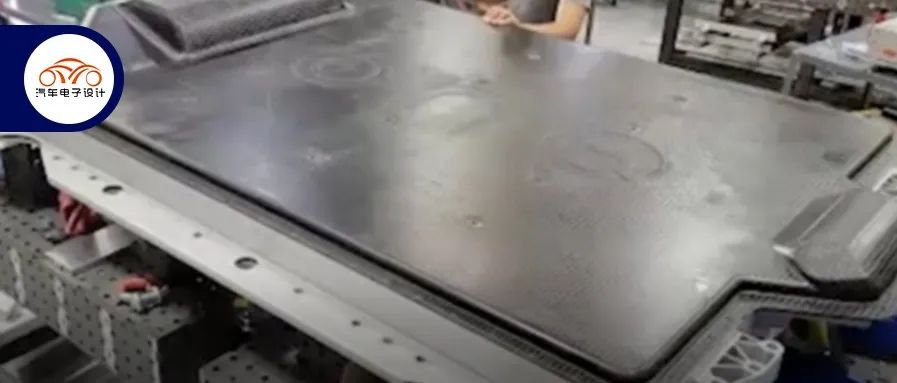Author: Zhu Yulong
BMW I Venture has invested in a start-up company named Our Next Energy, which was founded in 2020. This company, which has raised a total of 85 million US dollars, plans to invest 1.6 billion US dollars in building a local 20GWh lithium iron phosphate (LFP) factory in Michigan. I have also spent some time reviewing the technical roadmaps of the company.
In terms of overall design, the company focuses on LFP and Anode-Free Batteries (AFB), and the design approach is quite similar to that of CATL’s AB battery.
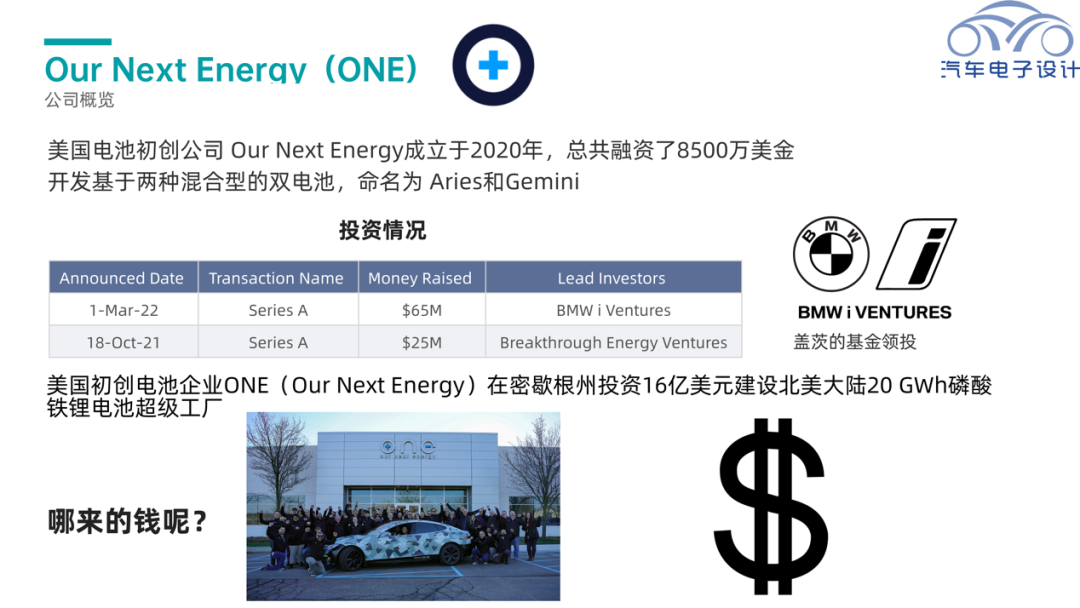
The first battery (Aries) adopts a “cell-to-pack” approach that directly stacks and uses LFP in the battery pack to achieve higher system-level energy density.
The second technology, called Gemini “High Energy Battery Pack”, is used in combination with the first battery to extend the range.
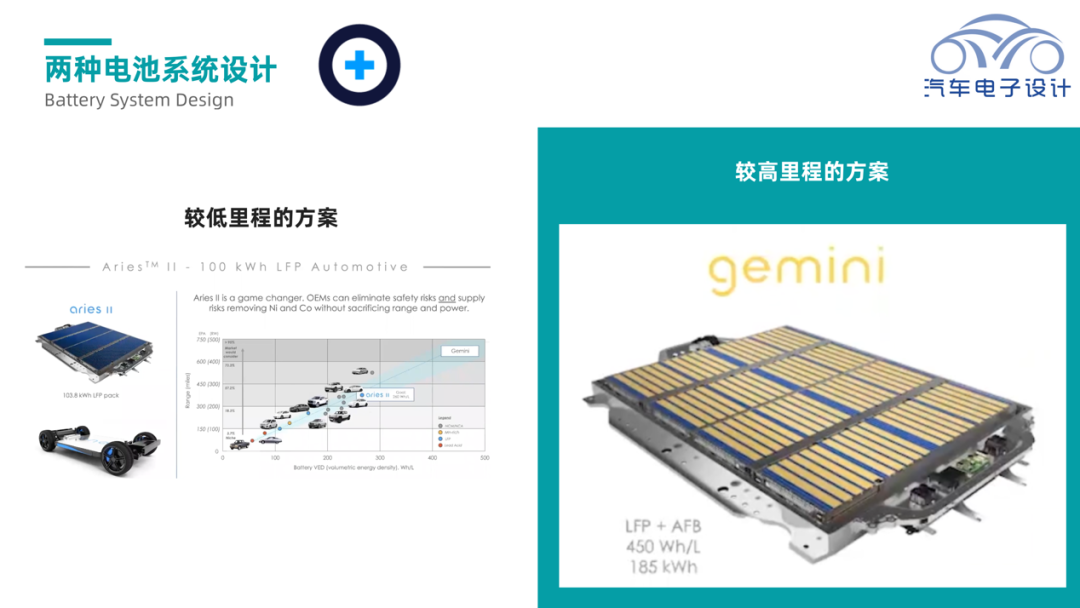
Design Philosophy
The first-generation Aries battery is mainly designed for commercial vehicles, with a battery energy of 79 kWh, dimensions of 1630766288mm, system energy density of 144Wh/kg, and 287Wh/L. The pack-level efficiency is 76%.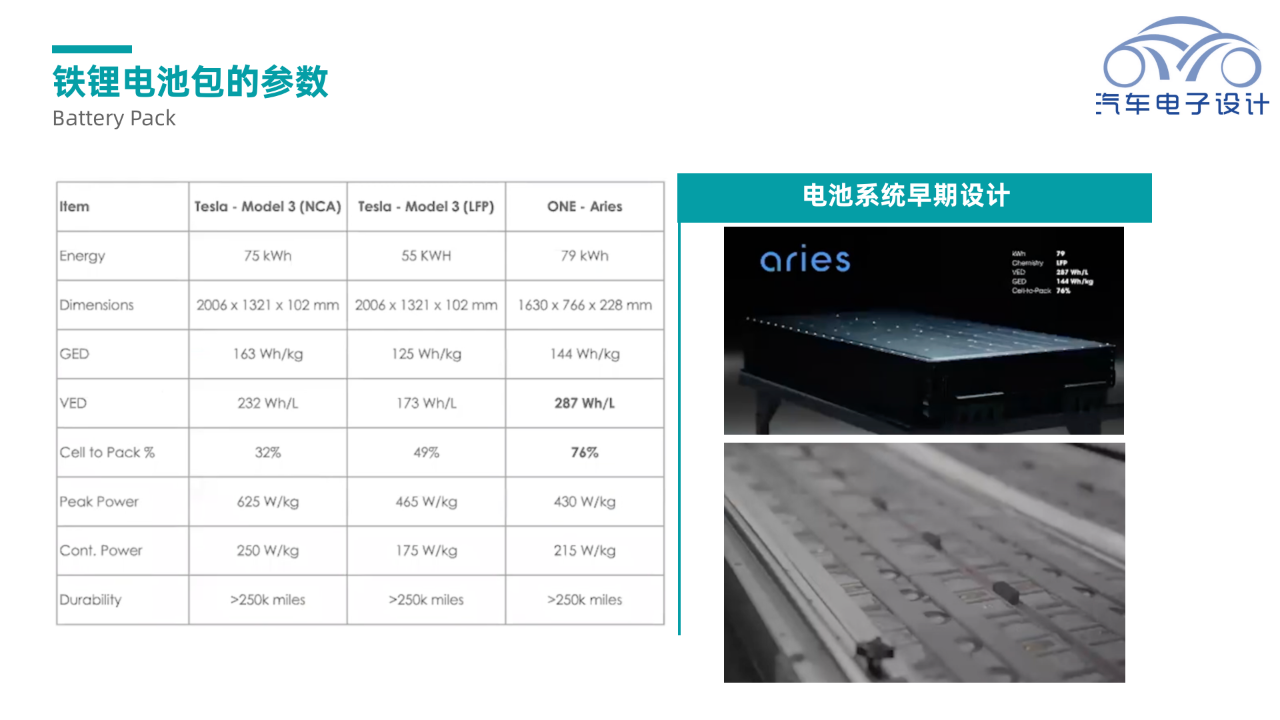
The first generation iron-lithium battery is mainly aimed at commercial vehicles and energy storage, and there is no major design feature in the overall design concept.
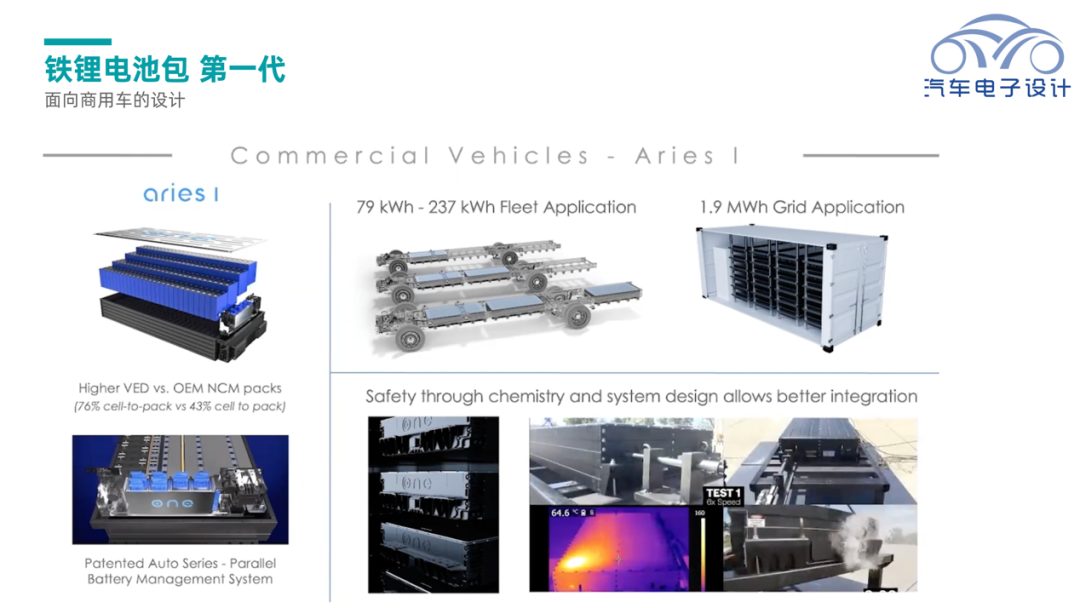
Composite Battery
After BMW’s investment, the company also provided a set of batteries for BMW, mainly using Anode Free battery cells, with a volumetric energy density of 1007Wh/L. This is a 240Ah bladeless anode-free battery, which has poor power characteristics, so a composite method is also used for the application.
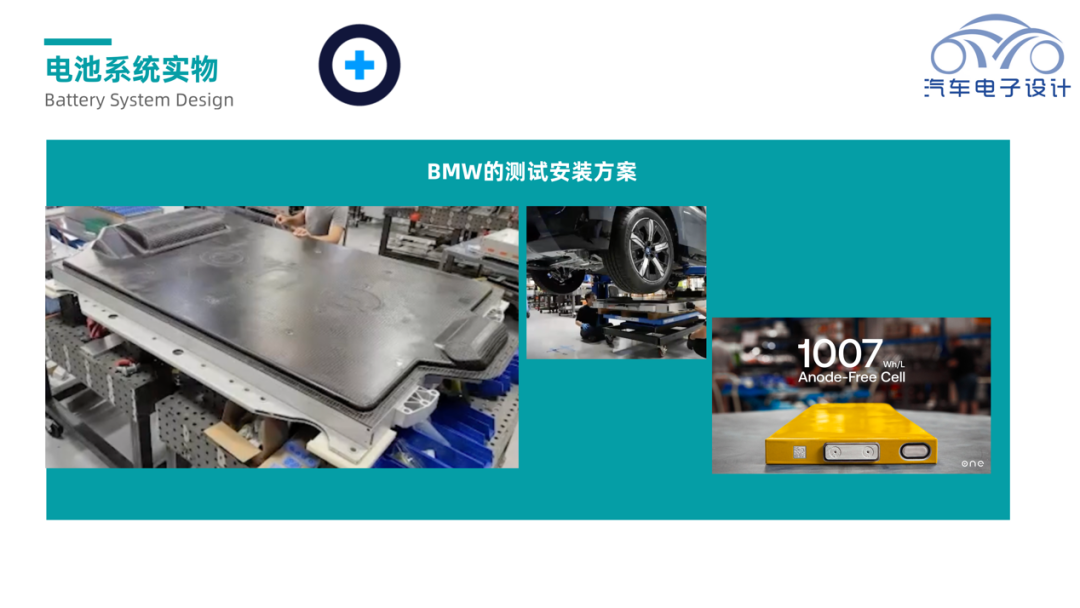
This design targets a 185kWh battery, and the two batteries are directly combined for application.
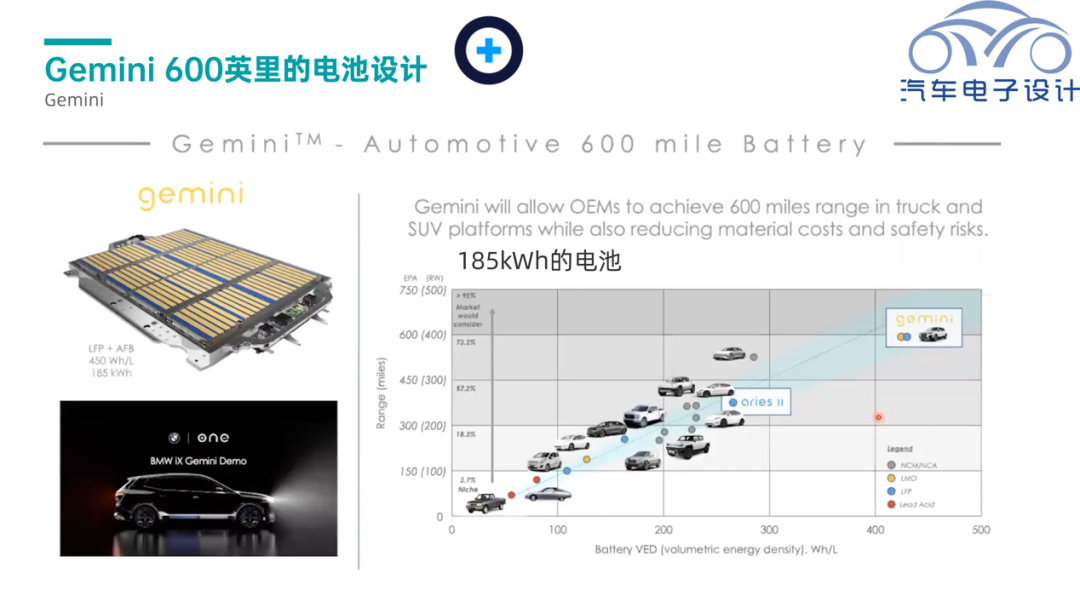 Combining the features of two different cycles, LFP was chosen as the primary battery while AFB was used for energy storage due to the relatively small number of cycles for AFB recognized by the start-up company. The combination strategy was optimized to enhance the overall battery characteristics.
Combining the features of two different cycles, LFP was chosen as the primary battery while AFB was used for energy storage due to the relatively small number of cycles for AFB recognized by the start-up company. The combination strategy was optimized to enhance the overall battery characteristics.
Note: Currently, AFB can be designed with high energy density but poor cycle performance. However, a specialized system design was adopted here to solve the issue of poor cycling.

Here, an alternating use approach between AFB and LFP was employed. This method ensures that blade lithium iron phosphate batteries can better resist thermal propagation during thermal runaway.
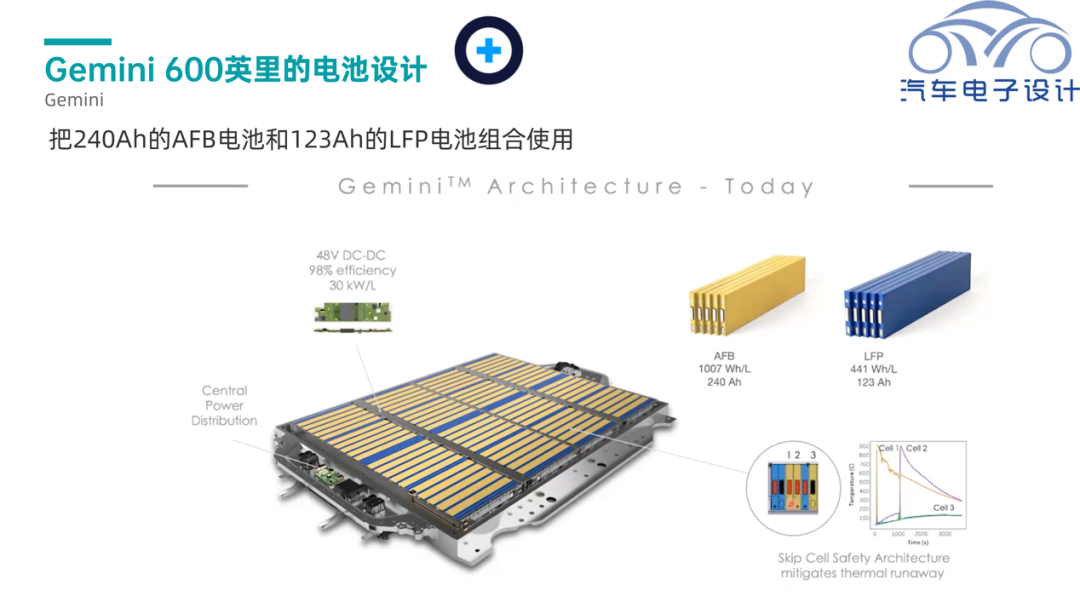
Because of the relatively high overall energy density, the DCDC was integrated into the battery system.
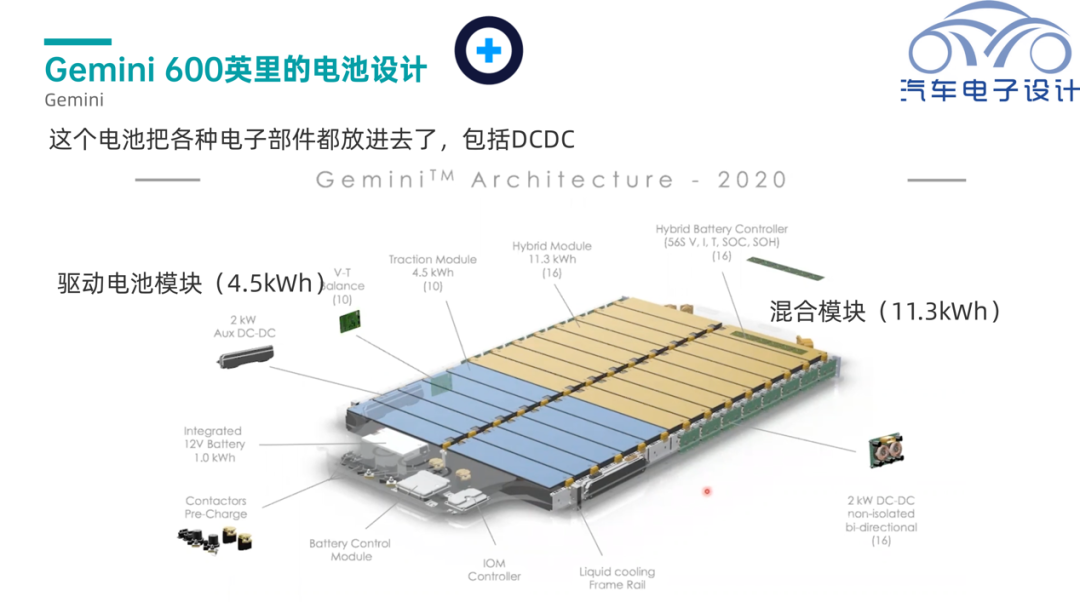 The goal here is to use LFP module as the main loop product and let the hybrid module serve as an energy supplement package. The concept is to store energy using Anode Free batteries with limited usage but interesting chemical system selection to consider cost.
The goal here is to use LFP module as the main loop product and let the hybrid module serve as an energy supplement package. The concept is to store energy using Anode Free batteries with limited usage but interesting chemical system selection to consider cost.
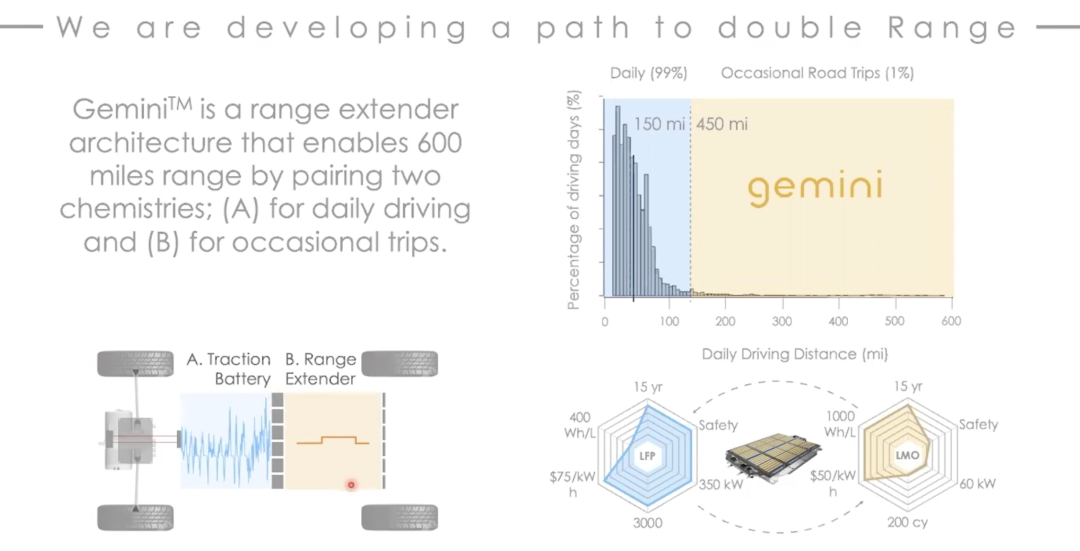
In summary, I think this company has some good ideas based on the actual characteristics of the existing battery cells, which have high energy density but limited cycles and poor safety. The fact that they can still be used in vehicles for up to 200 cycles is really impressive.
This article is a translation by ChatGPT of a Chinese report from 42HOW. If you have any questions about it, please email bd@42how.com.
